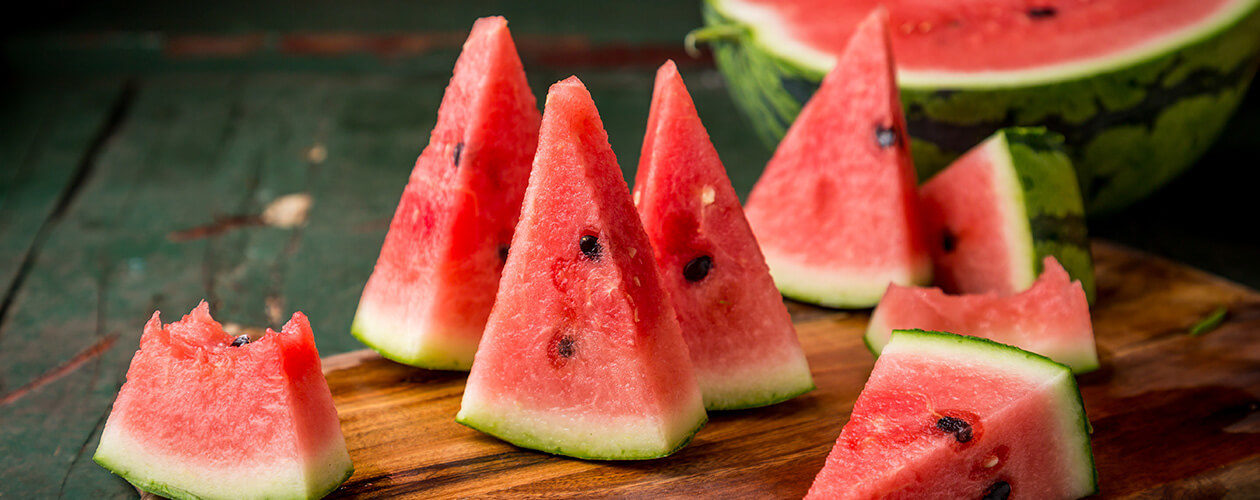The summer fruit par excellence, watermelon is perfect on a hot summer day. To fully appreciate the flavours, opt for Quebec watermelons, available at our grocery stores from July to September. Here are some fun facts on this summer must.
The origins of watermelon
Originally from West Africa, watermelon is from the cucurbitaceous family, the same family as squash, cucumber, and zucchini, for example. Botanically, it looks more like a veggie, but its fruity, juicy flesh is generally consumed as a fruit. Its cultivation, which dates to Ancient Egypt, eventually moved to the shores of the Mediterranean over the centuries. It thrives in warmer countries, as the watermelon plant needs temperatures over 25C. Although Quebec’s climate is far from tropical, watermelon can still be cultivated on our territory. To make up for the short Quebec summers, watermelon producers begin their harvest indoors and cover the soil to protect the plants from the cooler weather.
How can you tell if your watermelon is ripe?
There’s nothing more frustrating than biting into a slice of watermelon and finding it tastes just like . . . water! There are various ways to tell if your watermelon is ready—the well-known technique of tapping on it, for example. If you hear a hollow sound, your melon is ready for consumption. But there are other effective ways to tell a melon’s level of ripeness. If it has stripes and a yellow or orangey hue, you can expect the flesh to be sweet and ripe. You can also look at the colour of the stem: if it’s brown, time to eat up! A green stem indicates that your melon isn’t ripe yet. If you’re buying melon that is already cut for you, look for bright red flesh that is firm.
Nutritional facts
Watermelon is not only delicious, it’s also nutritious! Consisting of 92% water, it’s especially thirst quenching. It’s also rich in antioxidants and is an excellent source of potassium, vitamin C, thiamin, and vitamin A. Need a little afternoon pick-me-up? With a high-fibre content, watermelon is the perfect snack. With just 50 calories/cup, eat to your heart’s content!
Conservation and preparation
A whole watermelon keeps about one week in a cool, dry place. Once cut, cover it with a plastic wrap and keep it in the fridge for up to five days.
To prepare it, start by cutting the melon in half, and cut each of those pieces in half. Next, simply slice it up and serve them as is, or add the flesh to your favourite recipes!
In your recipes
Thanks to its sweet taste, watermelon will become your best ally for creating refreshing desserts. It will take your fruit salads and breakfast smoothies to new heights.
Want to add a little oomph to your dish? Try a new take on Greek salad by mixing watermelon cubes with feta cheese, tomatoes, red onions, and olives, and a handful of fresh herbs, such as chopped mint and basil. A real delight! See the full recipe
here.
With your appetizer, as a main course, or even as a side, watermelon is sure to brighten up your favourite recipes. Enjoy it a melon-and-one ways!



